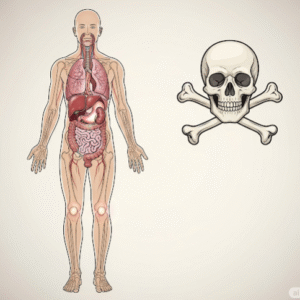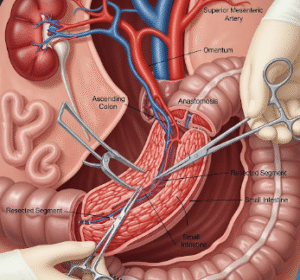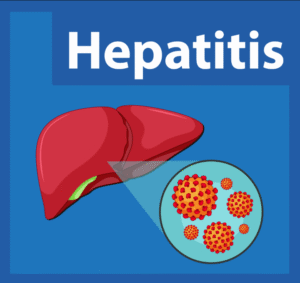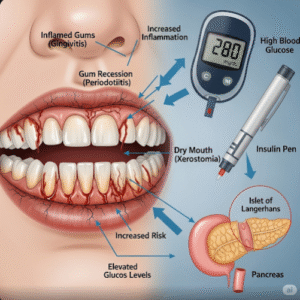Overview
Hyperalgesia is a medical condition characterized by an increased sensitivity to pain, where normally painful stimuli are perceived as more intense than usual. It can affect specific areas of the body or be generalized, depending on the underlying cause. Hyperalgesia is often seen in chronic pain conditions, after injury, or due to certain medications, particularly opioids.
In South Korea, pain management clinics and neurological centers provide comprehensive assessment and treatment options, including medications, physical therapy, and advanced pain management interventions. Early recognition is important to improve quality of life and prevent chronic pain complications.
Key Facts
🟢 ➤ Hyperalgesia is an increased sensitivity to painful stimuli, making normal pain feel more severe.
🟢 ➤ Can be localized (affecting one area) or generalized (affecting the whole body).
🟢 ➤ Common causes include chronic pain conditions, nerve damage, inflammation, and opioid use.
🟢 ➤ Symptoms may range from mild discomfort to severe, debilitating pain.
🟢 ➤ Treatment focuses on addressing underlying causes, relieving pain, and improving function.
🟢 ➤ Korean pain clinics provide a multidisciplinary approach, including medication management, physiotherapy, and interventional procedures.
What is Hyperalgesia?
Hyperalgesia occurs when pain-processing pathways in the nervous system become overactive, leading to exaggerated pain perception.
Key points:
➤ Can occur after tissue injury or inflammatory conditions.
➤ Opioid-induced hyperalgesia may develop in patients taking long-term opioid therapy, where opioids paradoxically increase sensitivity to pain.
➤ The condition can be acute (short-term after injury or surgery) or chronic, associated with long-standing pain disorders.
➤ Hyperalgesia can involve both peripheral and central nervous system changes, including nerve sensitization and altered pain signal processing in the spinal cord or brain.
Symptoms Related to Hyperalgesia
Symptoms may vary depending on cause, duration, and body region affected:
🟢 ➤ Exaggerated pain response to normally painful stimuli (heat, cold, pressure).
🟢 ➤ Pain that spreads beyond the area of injury or original pain site.
🟢 ➤ Persistent discomfort, burning, or throbbing sensations.
🟢 ➤ Sensitivity to touch or pressure in affected areas.
🟢 ➤ Difficulty performing daily activities due to heightened pain.
🟢 ➤ Emotional effects such as anxiety, depression, or irritability due to chronic pain.
Causes / Possible Causes
Hyperalgesia can result from various conditions affecting the nervous system or tissues:
Chronic Pain Conditions
➤ Fibromyalgia, arthritis, and neuropathic pain can lead to central sensitization, increasing pain sensitivity.
Nerve Damage
➤ Peripheral neuropathy from diabetes, injury, or infections can produce localized hyperalgesia.
Inflammation
➤ Tissue injury, surgery, or inflammatory diseases such as rheumatoid arthritis or lupus can cause heightened pain perception.
Opioid-Induced Hyperalgesia
➤ Long-term opioid use may paradoxically increase pain sensitivity.
Other Causes
➤ Chemotherapy-induced neuropathy, post-surgical pain, or trauma can contribute to hyperalgesia.
When Should I See a Doctor?
Seek medical evaluation if:
🟢 ➤ Pain becomes disproportionately severe compared to the injury or condition.
🟢 ➤ Pain persists despite standard treatments.
🟢 ➤ Pain affects daily functioning, sleep, or mental health.
🟢 ➤ You are taking opioids and notice increasing pain instead of relief.
Early assessment helps identify underlying causes, optimize treatment, and prevent chronic pain complications.
Care and Treatment
Management of hyperalgesia involves a multidisciplinary approach tailored to the cause:
Medication Management
➤ Non-opioid analgesics (NSAIDs, acetaminophen) for mild pain.
➤ Neuropathic pain medications (gabapentin, pregabalin) for nerve-related hyperalgesia.
➤ Adjusting or tapering opioids in cases of opioid-induced hyperalgesia.
Physical Therapy and Rehabilitation
➤ Exercise, stretching, and targeted therapies improve function and reduce pain perception.
➤ Techniques such as TENS (transcutaneous electrical nerve stimulation) may provide relief.
Psychological and Behavioral Interventions
➤ Cognitive-behavioral therapy (CBT) and mindfulness can help manage pain perception and emotional impact.
➤ Stress reduction techniques reduce pain amplification due to central sensitization.
Interventional and Advanced Treatments
➤ Nerve blocks or epidural injections for targeted pain relief.
➤ Neuromodulation therapies, including spinal cord stimulators, in chronic cases.
Advanced Care in Korea
➤ Pain management centers in South Korea offer comprehensive evaluation, multidisciplinary therapy, and interventional procedures.
➤ Programs combine neurology, rehabilitation, and psychological support for effective long-term management.
Highlights (Clean Green Arrow Version)
🟢 ➤ Hyperalgesia is an increased sensitivity to pain, making normal pain feel more intense.
🟢 ➤ Causes: chronic pain conditions, nerve damage, inflammation, long-term opioid use, or trauma.
🟢 ➤ Symptoms: exaggerated pain response, persistent discomfort, spreading pain, and sensitivity to touch.
🟢 ➤ Early evaluation helps identify underlying causes, optimize treatment, and prevent chronic pain.
🟢 ➤ Management includes medications, physical therapy, psychological interventions, and advanced pain management techniques.
🟢 ➤ South Korea provides multidisciplinary pain management, including medical, rehabilitative, and interventional care.













